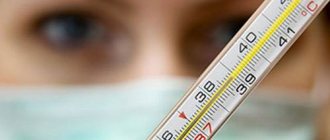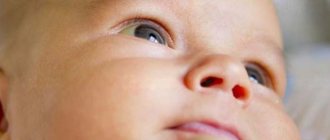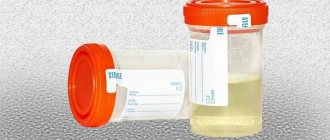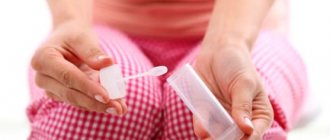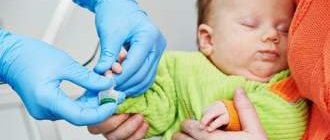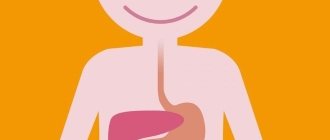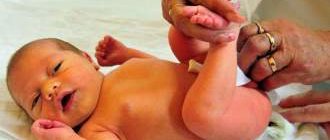Indications for biochemical blood tests in children
- diagnosis of diseases of internal organs and systems;
- metabolic diseases;
- diseases of the liver, kidneys, spleen;
- diseases associated with hormonal imbalance;
- infectious diseases;
- acute surgical diseases;
- preparation for surgical operations and medical procedures;
- hereditary diseases and congenital abnormalities;
- preventive (screening) studies;
- monitoring the effectiveness of treatment.
What is research
Bilirubin is a yellow pigment found in plasma (serum) and stool. A bilirubin blood test determines the level of bilirubin in the body. Bilirubin is produced in the body when the hemoglobin protein in old red blood cells is broken down. The destruction of old blood cells is a normal normal physiological process. About 250-350 mg of bilirubin is normally produced daily, of which 85% is obtained from destroyed red blood cells, and the rest from the bone marrow and liver. After circulating in the blood, bilirubin travels to the liver. In the liver, bilirubin is processed, mixed with bile, and then excreted into the bile ducts and stored in the gallbladder. Eventually, bile enters the small intestine to help digest fats. Ultimately, bilirubin is excreted from the body along with feces.
Bilirubin attached by the liver to glucuronic acid, which is obtained from glucose, is called direct or conjugated (bound) bilirubin. Bilirubin that is not bound to glucuronic acid is called indirect or unconjugated (free) bilirubin. All bilirubin in the blood is called total bilirubin.
A comprehensive blood test for bilirubin will provide an accurate count of all three levels of bilirubin: total, direct (bound, conjugated) and indirect (free, unconjugated, unbound). In some conditions and diseases, an increase in bilirubin levels in the body is observed. An increase in bilirubin in the blood may indicate premature destruction of red blood cells, damage to liver cells, or impaired flow of bile through the biliary tract. A decrease in bilirubin levels does not have significant diagnostic value.
The level of direct (bound) bilirubin may increase for the following reasons:
- Subhepatic (mechanical, obstructive) jaundice occurs due to difficulty in the normal outflow of bile either within the liver itself or along the biliary tract. This can be caused by stones in the bile ducts, bile duct scars, or tumors compressing the common bile duct.
- Hepatic (parenchymal) jaundice - increased bilirubin due to liver damage due to hepatitis of all types, infectious mononucleosis, cancer.
- Rotor and Dabin-Johnson syndromes are rare hereditary diseases associated with difficulty removing direct bilirubin from the liver cell.
When too much bilirubin accumulates in the body, the skin and whites of the eyes begin to turn yellow. In both adults and children, symptoms associated with high bilirubin may also include fatigue, itchy skin, dark urine, and poor appetite.
Features of biochemical blood tests in children
Standard biochemical parameters in a child change throughout life. Therefore, in laboratory diagnostics of biological fluids, I usually distinguish four main age periods:
- newborn - first four weeks of life;
- infant - from four weeks to two years;
- child – from two years to puberty;
- adolescence – from the age of puberty to entry into adulthood.
For example, in the neonatal period, the standard values for glucose, calcium and magnesium are lower, while the levels of urea and bilirubin are higher than in other age groups. Newborns and babies born prematurely may have significantly different hormone levels.
The low weight of a newborn or infant, the small size of his body and some other features impose special requirements on the highly qualified medical personnel who collect samples of material for biochemical research. For example, special skill is required for collecting capillary blood from newborns and infants: excessive compression of the capillaries when squeezing out drops of blood can lead to the destruction of its cells, which in turn distorts the picture of the content of potassium, magnesium, phosphates and some enzymes in the blood.
What results are normative (reference)
Reference values (normal direct bilirubin) are in the range of 0 - 5 µmol/l.
Reference values (normal bilirubin in newborns and patients of other age groups):
| Age | Reference values |
| Less than 1 day | 24 - 149 µmol/l |
| 1-3 days | 58 – 197 µmol/l |
| 3-6 days | 26 - 205 µmol/l |
| More than 6 days | 0 - 21 µmol/l |
What to do so that your child is not afraid of taking blood from a vein or finger:
Blood tests can cause some fears in children (children may be afraid of pain or the sight of blood), so try to tell your child in advance that no harm will come to him.
The medical staff of our center is excellent at working with small children, you don’t have to worry, the blood will be drawn quickly and professionally, our nurses try to take blood from both a vein and a finger so that the kids are not afraid and do not cry.
For mothers: if you are worried that your baby will not react well to taking blood from a vein or from a finger, you can first play “tests” with your child at home on a soft toy, showing how the procedure for taking blood from a vein goes. Repeating the game procedure with your child several times will significantly reduce the level of fear from the unknown of the upcoming procedure.
While collecting material for research from a child, stay close to him, diverting his attention by verbally counting or repeating the alphabet.
Who orders the study?
Pediatrician, general practitioner, therapist, gastroenterologist, infectious disease specialist, oncologist, hematologist, endocrinologist, as well as doctors of other specialties.
What is the purpose of bilirubin analysis?
- Total bilirubin analysiscarried out for the purpose of diagnosing various blood diseases in which increased destruction of red blood cells occurs: sickle cell anemia, spherocytosis, sideroblastic anemia, physiological and hemolytic jaundice of newborns, assessing the condition of the liver, identifying the severity of hepatitis, bile duct patency, for diagnosing pancreatic diseases, assessing the severity of poisoning with hepatotoxic and hemolytic substances.
- A direct bilirubin test is performed to determine whether elevated total bilirubin is associated with blockage of the bile ducts (due to stones, narrowing of the bile duct, or tumor) or liver disease such as hepatitis or cirrhosis.
When is the study scheduled?
Analysis for total bilirubin:
- For symptoms of blood diseases.
- When it is necessary to assess the functional state of the liver.
- For jaundice, particularly in newborns.
- When diagnosing liver diseases.
- When assessing the function of the biliary tract.
- If viral hepatitis is suspected.
- When clinical monitoring of a patient with liver disease is carried out.
- For symptoms of bile duct blockage.
- When monitoring the condition of a patient who has been poisoned by certain chemicals.
Test for direct bilirubin:
A direct bilirubin test is prescribed when the level of total bilirubin increases. In addition, it can be part of standard diagnostic panels that are used during routine medical examinations and in preparation for surgery. It is also usually included in liver tests used to evaluate liver function. This study is also prescribed for obvious signs of jaundice.
How is blood taken for biochemical studies?
Blood is collected from newborns from the heel by puncturing the skin with a thin children's scarifier. In infants older than one month, blood is taken from the cubital vein.
In all cases, the nurse treats the surface of the skin with an antiseptic spray or solution. To increase the amount of blood in the vein before the study, it is briefly clamped with a tourniquet (soft tourniquet). Then a thin needle is inserted into the vein, through which the blood flows into a test tube or syringe. After blood collection, the injection site is treated with an antiseptic, and a bandage or plaster is applied to it.
Where is blood taken for bilirubin in newborns?
To test blood for bilirubin in newborns, blood is taken from a visible venous vessel on the head. This procedure is not traumatic and is usually successful, since it is always performed by the most qualified medical personnel.
An alternative method is to apply a tester (a device that uses a contact method to analyze bilirubin levels based on skin color) to the skin. It is considered indicative, therefore, if pathological jaundice is suspected, doctors prefer traditional blood tests.
How to take blood from infants
To take blood for bilirubin from an infant, the nurse wipes the area on the scalp with alcohol where the vein is most clearly visible. A thin needle pierces the skin and inserts a test tube, collecting 3-5 ml of blood. If hemolytic disease of the newborn (destruction of red blood cells due to Rh incompatibility) is suspected, blood is taken immediately after birth from the umbilical cord. If repeated tests for bilirubin are necessary, the doctor may place a catheter in the vein.
Decoding and interpretation of the results of biochemical blood tests
The printout of the results of the study of biochemical parameters provided by the laboratory will indicate the levels of the test substances in the blood plasma and the normative indicators for the child’s age.
The results obtained should be assessed by the pediatrician or medical specialist who ordered the study. Based on the biochemical tests obtained, the doctor will prescribe treatment or suggest additional studies to clarify the diagnosis.
Biochemical studies are an informative, fast and safe method of studying the state of the child’s body and the functioning of individual internal organs and systems, which allows you to accurately establish a diagnosis and carry out the required treatment with maximum efficiency, or get rid of worries and doubts about the state of your baby’s health.
You can get additional information about biochemical studies and sign up for tests at the medical office by calling.
Complexes with this research
Male check-up No. 1 39 studies for annual preventive examination RUB 18,570 Composition
Pregnancy planning. Clinical indicators 6,630 R Composition
Female infertility Analysis of the state of women's reproductive health 16,210 RUR Composition
IN OTHER COMPLEXES
- Women's check-up No. 1 RUB 19,290
- Healthy interest 4,250 RUR
- Examination during pregnancy. 1st trimester 16,690 RUR
- Expanded hospital complex 7,700 RUR
- For those at risk of COVID-19 RUB 4,510
How is biological material collected for research?
To test for bilirubin, you will need a small amount of blood, which will be taken from the child from the smallest vessels (capillaries) of the finger on the hand, or, if the baby is not yet a year old, from the heel or toe. The nurse punctures the skin using a disposable, sterile strip with a small point at the end. The resulting drop of blood is applied to a laboratory glass, covered with a second one and rubbed. The blood smear will later be examined by a laboratory technician under a microscope or analyzed using a computer.
In children's medical clinics, only special children's scarifiers are used to puncture the child's skin.
Since it is preferable to use venous blood for research, in older children, as well as for biochemical analysis and serological studies, the child’s blood can be taken from a vein using a disposable needle and vacuum blood collection tubes.
The material is collected using sterile disposable instruments by an experienced certified nurse or doctor.
How to prepare a child for analysis?
- Blood sampling is carried out in the morning on an empty stomach, or at an agreed time.
- Children under 1 year of age should not be fed for 30-40 minutes before the test. Children aged 1 to 5 years should refrain from eating 2-3 hours before the test.
- Older children, teenagers and adults should not eat for 8 hours before the test. In this case, you can drink clean still water.
- For all ages, physical and emotional stress should be excluded for 30 minutes before the test. The day before the test, it is necessary to exclude increased physical activity (workouts), and for adolescents and adults, alcohol and energy drinks.
- You should tell the doctor in advance about the medications your child is taking because some medications may affect the test results.



